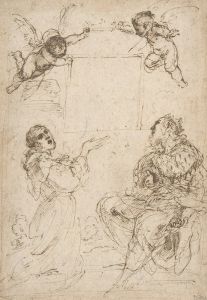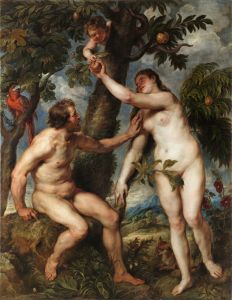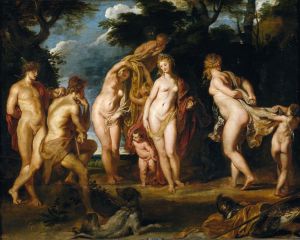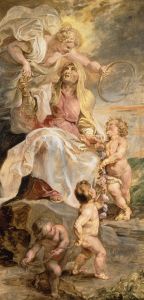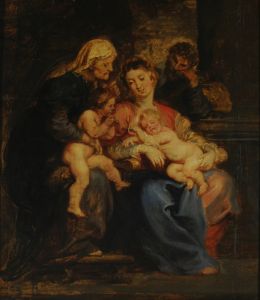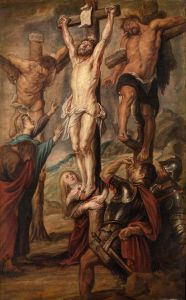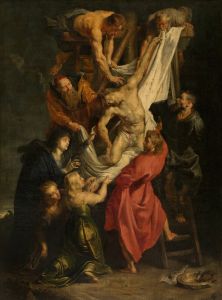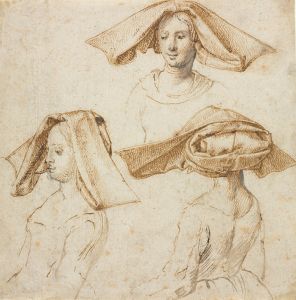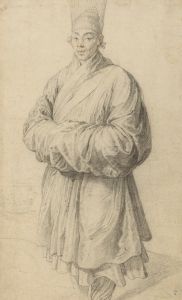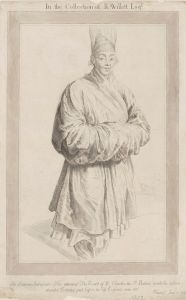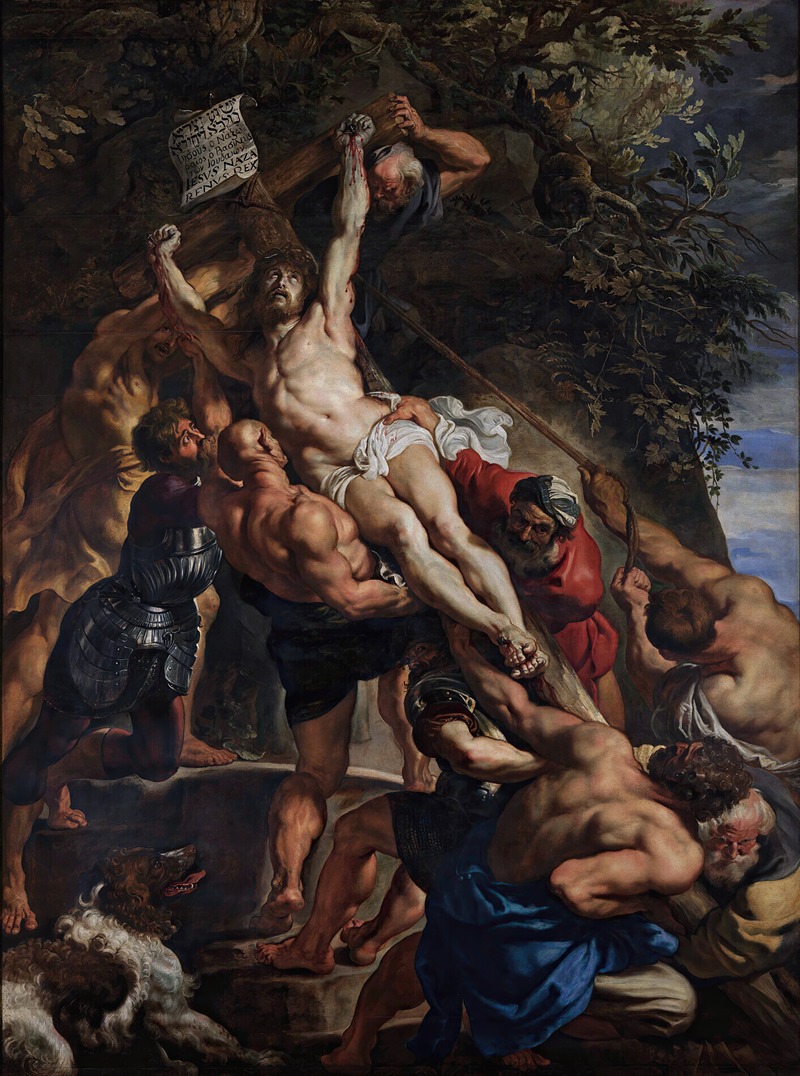
The Raising of the Cross
A hand-painted replica of Peter Paul Rubens’s masterpiece The Raising of the Cross, meticulously crafted by professional artists to capture the true essence of the original. Each piece is created with museum-quality canvas and rare mineral pigments, carefully painted by experienced artists with delicate brushstrokes and rich, layered colors to perfectly recreate the texture of the original artwork. Unlike machine-printed reproductions, this hand-painted version brings the painting to life, infused with the artist’s emotions and skill in every stroke. Whether for personal collection or home decoration, it instantly elevates the artistic atmosphere of any space.
"The Raising of the Cross" is a monumental triptych painting created by the Flemish Baroque artist Peter Paul Rubens. Completed in 1610-1611, this masterpiece is housed in the Cathedral of Our Lady in Antwerp, Belgium. The work is a significant example of Rubens' dynamic composition and his ability to convey intense emotion and movement.
The central panel of the triptych depicts the dramatic moment of the crucifixion of Jesus Christ. In this scene, Christ is shown being raised on the cross by a group of muscular executioners. The figures are arranged in a diagonal composition, which enhances the sense of movement and struggle. The physical exertion of the men lifting the cross is palpable, and their contorted bodies and strained expressions convey the immense effort required. Christ's body, illuminated by a strong light source, stands out against the darker background, emphasizing his suffering and sacrifice.
The left wing of the triptych shows the Virgin Mary, Saint John the Evangelist, and a group of mourning women. Their sorrowful expressions and gestures highlight the emotional gravity of the scene. The right wing depicts Roman soldiers and onlookers, including the two thieves who are also being crucified. The inclusion of these figures adds to the narrative complexity of the work and provides a broader context for the central event.
Rubens' use of color, light, and shadow in "The Raising of the Cross" is masterful. The artist employs a rich palette of reds, blues, and earth tones to create a vivid and dramatic effect. The contrast between light and dark areas enhances the three-dimensionality of the figures and the overall composition. Rubens' skillful handling of chiaroscuro (the use of strong contrasts between light and dark) adds depth and intensity to the scene.
The painting reflects Rubens' deep understanding of human anatomy and his ability to depict the human form in a realistic yet dynamic manner. His figures are robust and full of energy, capturing the physicality and emotion of the moment. Rubens was influenced by the works of Italian Renaissance artists such as Michelangelo and Caravaggio, and this influence is evident in the dramatic poses and powerful expressions of the figures in "The Raising of the Cross."
"The Raising of the Cross" was commissioned by the church of St. Walburga in Antwerp, where it originally adorned the high altar. The painting was later moved to the Cathedral of Our Lady after the demolition of St. Walburga's Church in the 19th century. The triptych has undergone several restorations over the centuries to preserve its condition and ensure that future generations can continue to appreciate its artistic and historical significance.
Peter Paul Rubens is considered one of the most important painters of the Baroque period, and "The Raising of the Cross" is a testament to his artistic genius. The painting not only showcases Rubens' technical prowess but also his ability to convey profound religious themes with emotional depth and dramatic intensity.






